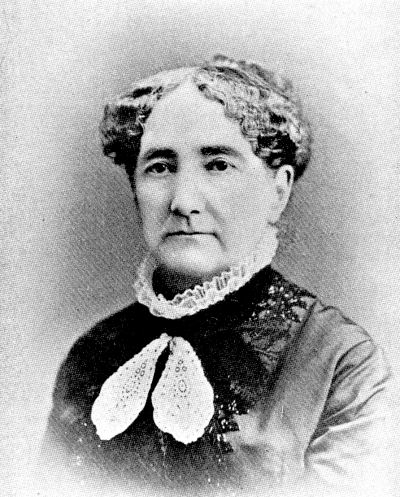This is a transcription of the Ruth (Lamprey) Cadle biography from New Hampshire Women: A Collection of Portraits and Biographical Sketches of Daughters and Residents of the Granite State, Who are Worthy Representatives of their Sex in the Various Walks and Conditions of Life, The New Hampshire Publishing Co., Concord, NH, 1895, page 61.

Ruth (Lamprey) Cadle
THE record of a very busy and useful life is recorded in that of Ruth Lamprey Cadle, who was born in the town of Orford, N. H., January 16, 1820. Her parents, Samuel Lamprey and Anna Johnson, were among the early settlers who moved from Hampton to Orford in 1811. After finishing her educational course at Canaan academy, then under the principalship of the late Chief Justice Sargent, and being ambitious for some new field, in response to a call for a teacher, she moved to the then far western town of Muscatine, Iowa, in 1847. After teaching acceptably two years she married in 1849 Cornelius Cadle, and of this union were born one son, Henry, now of Bethany, Mo., and one daughter, Abbie A., the wife of Col. Frank W. Mahin, of Clinton, Ohio. At the time of her marriage Mr. Cadle had four sons, who still survive, Col. Cornelius, Edward F., Capt. William L., and Charles F., all of whom served their country in the late war. The cholera epidemic that raged through the Mississippi valley in 1852 witnessed her ministrations, and families are still living who remember her with gratitude. But the great event which developed her ability to manage and control large movements was the late War of the Rebellion, during the whole period of which she served as president of the Muscatine County Soldiers’ Aid Society, and during which she helped to manage a fair at Muscatine that netted $25,000 for the Sanitary Commission. After the war her next attention was given to the orphans of the soldiers, and she was one of the incorporators of the Iowa State Soldiers’ Ophans’ Home, and as a fitting finale to her efforts in service and memory of the loyal defenders of the nation Mrs. Cadle was one of the chief solicitors of the fund with which was erected at Muscatine the first soldiers’ monument in the state. She also kept up her church and temperance work and her interest in scientific studies until the final summons came April 12, 1885.
